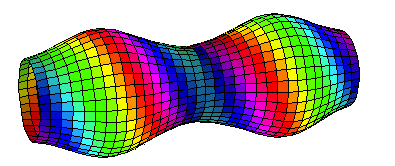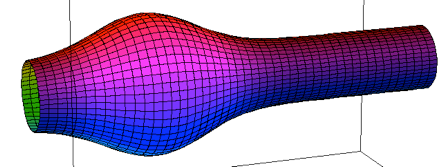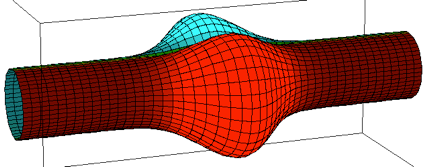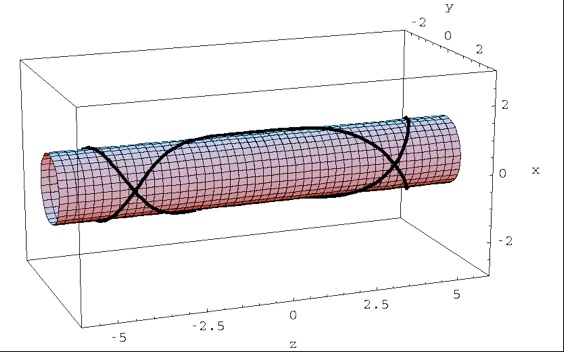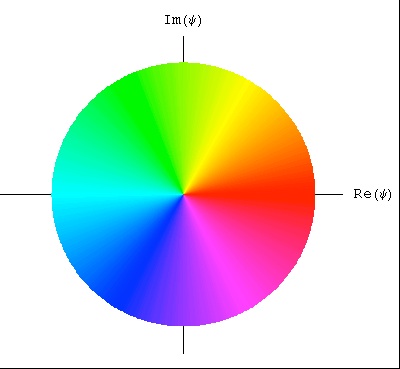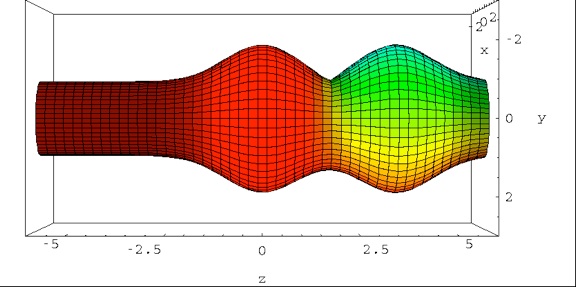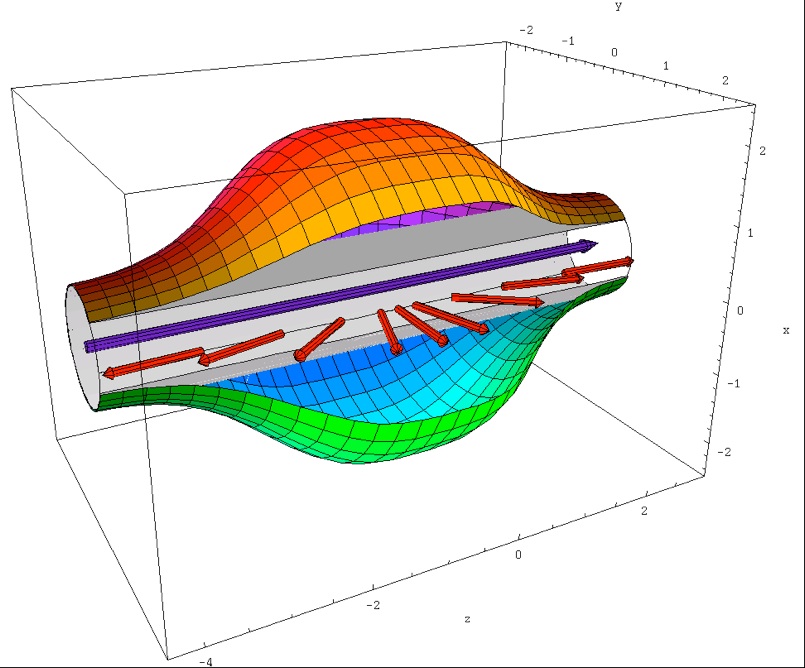Notice that, in the above animation, each of the two gaussians oscillates between the center and one of the two extremes of the cylinder, although it looks as if they go through each other. Generalize the above to the case where the angular part of the initial wavefunction is a general function f(phi), with Fourier decomposition given by f(phi)=Sum(f_k exp(i k phi). The initial gaussian will then split in an infinite, in general, number of gaussians, one for each Fourier component, each of which will oscillate around the potential it feels. In the following animation we take f(phi)=1 + exp(-i phi) + 1.5 exp(-i 2 phi) + exp(- i 3 phi).




